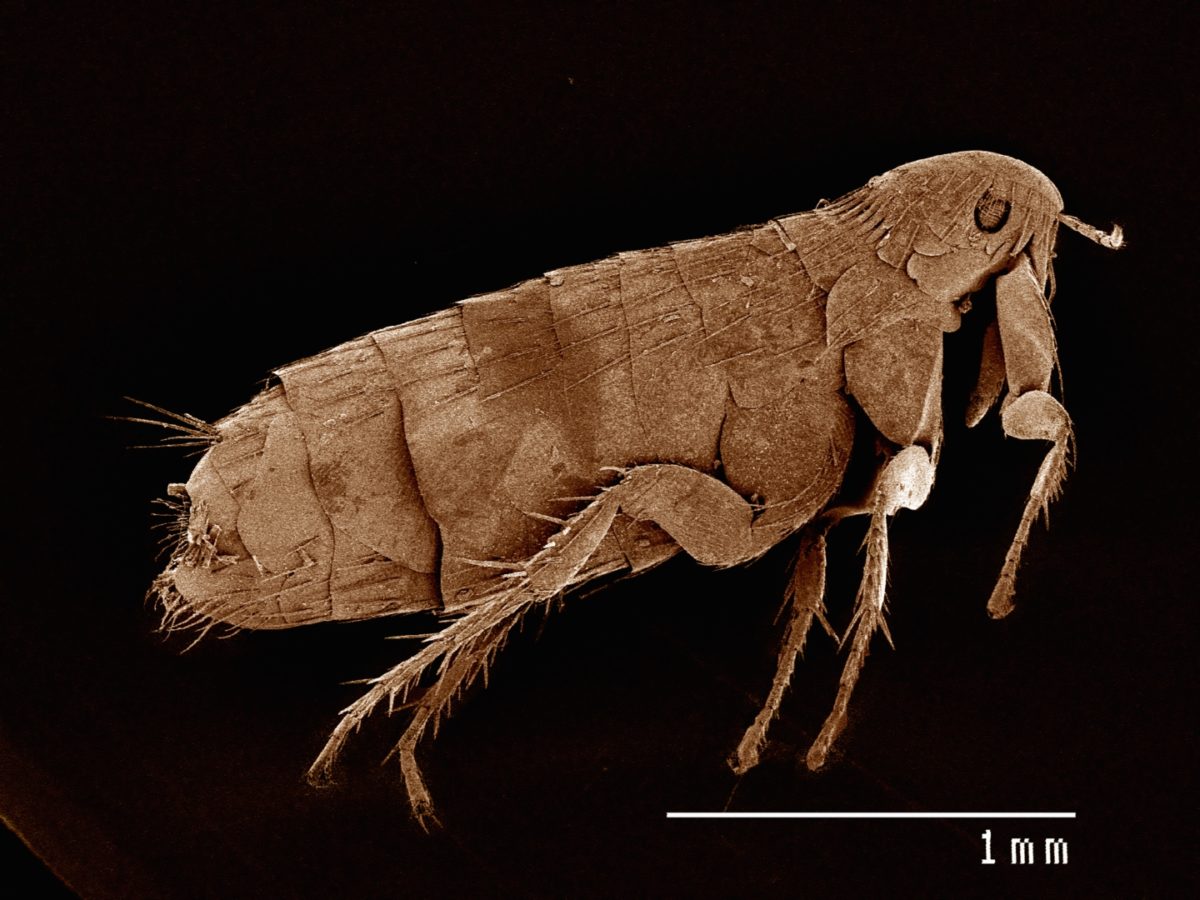Did you know that fleas ingest up to 15 times their body weight in blood? That’s right; fleas are parasitic creatures that thrive on consuming blood from mammals.
According to the CDC, over 2,500 known flea species exist globally, and more than 300 reside inside U. S. borders. Of those 300, the most common is the “cat flea.” The six-legged critter is regularly found on family pets and domesticated animals regardless of its namesake.
Flea 101 – Common Features
Like every living thing on Earth, fleas have standard features and characteristics that make them uniquely qualified as parasitic bugs.
Flea Jumping, Isn’t A Circus Trick.
Were you aware that a flea can jump up to 200 times its body length? That would be similar to jumping 250 feet straight up in the air or 450 feet forward across the surface of the Earth for the average human being.
But since humans are not capable of that, it’s a pretty phenomenal adaptation for these tiny parasites without wings. Although despite their long legs, their toes give them all their loft to make the landing.
Fleas are Bloodsuckers
These insidious freeloaders have to be able to jump that far to land on a passing host. Once they’ve found a viable host, feeding commences within the first five minutes and persists for two and half hours. That kind of gluttonous consumption can continue for nearly two months.
Flea Reproductivity
If that were not already creepy enough, female fleas have the most insatiable appetites, devouring nearly 15 times the amount in their weight. That is probably because some species of fleas can lay over 2,000 eggs in 50 days.
Flea Life-Cycle
The life cycle of a flea is pretty straightforward. Adult fleas begin mating shortly after their first blood meal and begin laying eggs on the host. The eggs can hatch in one to ten days, dependent upon optimal environmental mixes of temperature and humidity.
After hatching, the larvae move freely on the host, feeding on blood and flea feces, also known as flea dirt. After 5-20 days, the larvae spin a cocoon to enter a protective pupa stage. A state that keeps them protected from insecticides and repellents.
An adult flea will not emerge from the cocoon until a host is within proximity to begin feeding. Then the cycle starts all over again.
Flea Hosts
Like many parasitic insects, fleas are indiscriminate eaters. Whether the host is a domesticated or wild animal, a human, or a family pet, fleas, like ticks, can recognize body heat, movement, impact tremors, and breath.
They are notorious for infesting and thriving inside homes, especially if the house has carpet. Don’t be misled into thinking laminate, tile, or wood flooring means you will never have a flea infestation. It may reduce your chances of having a flea problem, but nothing is inevitable in the four-state region.
Fleas and Family Pets
So pet owners, be aware that May is flea and tick awareness month. Therefore, you’ll find no better time than right now to get your furry friends protected from peak flea and tick months.
As Spring shifts toward the warm, humid summer months in the four-state area, fleas will become more prevalent in the region. So protecting your furry little crew has never been more critical than in May of each year.
Four Common Flea Species
Four types of fleas are common to a home invasion: cat flea, dog flea, ground squirrel flea, and oriental rat flea. Unfortunately, these fleas are also infamous for carrying and transmitting rather vile illnesses to humans and their fur babies.
Cat Flea
The cat flea is among the most common flea found on cats, dogs, and many domesticated animals, like cows, horses, donkeys, lamas, and alpacas. These fleas often transmit flea-borne typhus and cat scratch fever.
Dog Flea
The dog flea is the second most likely flea for you and your furry crew. Like the cat flea, the dog flea is not a common flea found on family dogs in the U.S. These fleas are known for transmitting Dipylidium, a type of tapeworm.
Ground Squirrel Flea
These fleas are unfamiliar to the Kansas, Missouri, and Oklahoma areas, but that doesn’t mean you will never run into them in the four-state region. So it’s essential to be aware of these icky fleas as they are carriers of the plague.
Oriental Rat Flea
As the name implies, these fleas are associated with rats. When you get into warmer areas in the United States for more extended periods, you’ll discover rats can thrive. The oriental rat flea is yet another plague carrier and the flea-borne typhus.
Spray for Fleas is the Best Home Protection
After reading all you can on fleas, it probably feels like an excellent time for home protection against fleas. So give the Bug-A-Way team a call today; they’re ready to help you, your family, and your furry crew stay flea-free inside and outside your home. In addition, the team at Bug-A-Way wants to give you a head start on scheduling flea treatments for your home and yard.
